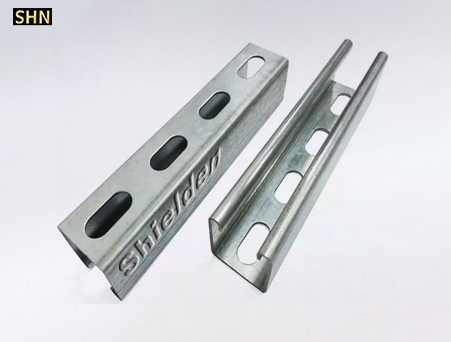+86 10 5248 4022
+86 18518927929

Aug. 07, 2023
In electrical engineering and construction, a strut refers to a structural component used to support and mount various electrical equipment, fixtures, and conduits. Struts are typically made of metal or aluminum and are designed to provide stability, strength, and flexibility in organizing and securing electrical installations.
The primary purpose of using struts in electrical applications is to create a framework or support system for mounting electrical panels, junction boxes, cable trays, and other components. They help to keep the electrical wiring and equipment organized and protected, reducing the risk of damage or accidents.
Struts come in various shapes and sizes, with holes or slots for easy attachment of other electrical accessories using nuts, bolts, or clips. They are commonly used in industrial, commercial, and residential settings to ensure a safe and well-organized electrical infrastructure.
Certainly! Here are some additional details about struts electrical applications:
Material and Design: Electrical struts are typically made from materials like galvanized steel or aluminum, which offer high strength and corrosion resistance. They may come in different profiles, such as C-shaped, U-shaped, or square, depending on the specific application and load requirements.
Versatility: Struts are versatile and can be used in a wide range of electrical installations, including power distribution, lighting systems, data centers, and industrial equipment.
Easy Installation: Struts are designed to be easy to install and can be quickly adjusted to accommodate changes in the electrical layout. They can be cut and bent as needed to fit specific requirements.
Accessories: Various accessories are available for struts, such as brackets, clamps, beam clamps, and strut nuts, which allow for secure attachment of electrical components and conduits.
Cable Management: Struts also play a significant role in cable management. They can support cable trays, conduit runs, and pipes, helping to organize and protect the wiring from potential damage.
Load-Bearing Capacity: The load-bearing capacity of electrical struts varies based on the material and design. Engineers must carefully calculate the loads to ensure the struts can safely support the weight of the installed equipment.
Outdoor Use: In outdoor installations, weather-resistant coatings or materials may be used to protect the struts from environmental elements.
Compliance with Codes and Standards: Struts used in electrical installations must comply with relevant electrical codes and standards to ensure safety and adherence to regulations.
Overall, electrical struts are an essential component in electrical infrastructure, providing structural support, cable management, and organization for a wide range of electrical systems. They play a crucial role in maintaining a safe and efficient electrical environment in various industries and applications.

Slotted Channel - for light structural support
Dec. 11, 2023How to Attach slotted channel to a Beam?
Dec. 11, 2023Leave Message
Write down your urgent needs to get free samples, and to check our stocks

Copyright © SS&HN INDUSTRY GROUP Ltd. All Rights Reserved | Sitemap | Powered by 